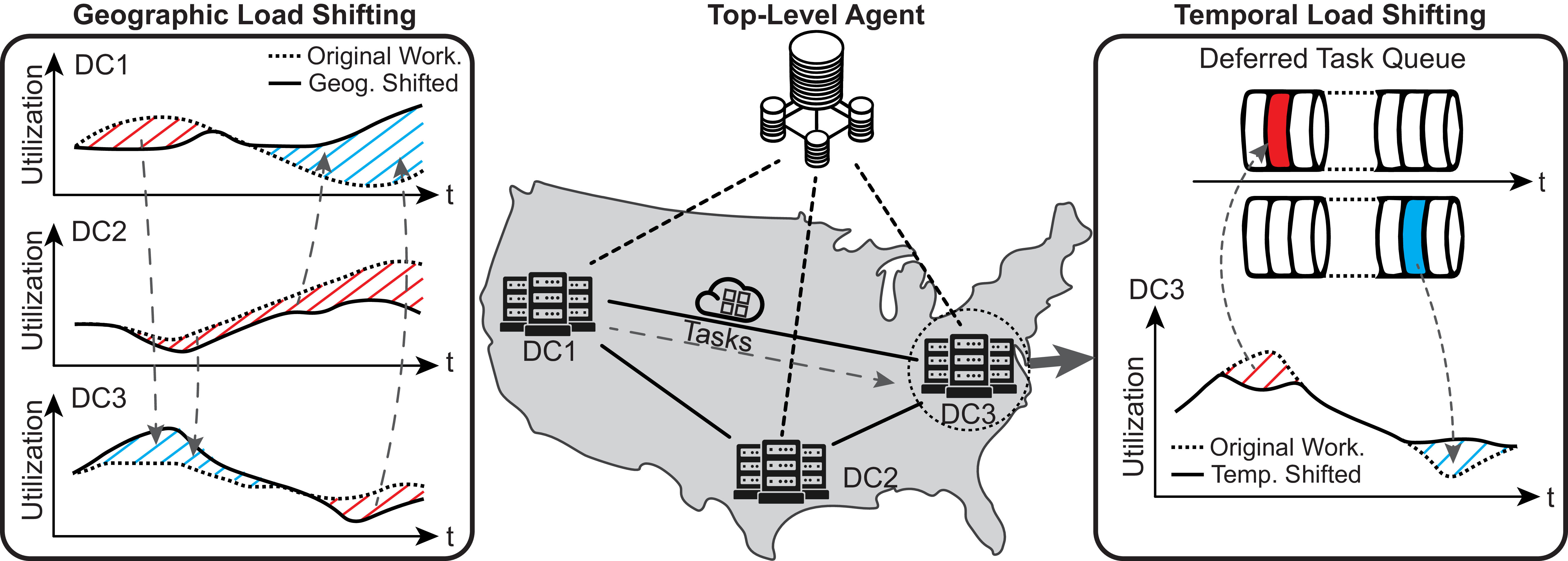Green-DCC¶
Green-DCC is a benchmark environment designed to evaluate dynamic workload distribution techniques for sustainable Data Center Clusters (DCC). It aims to reduce the environmental impact of cloud computing by distributing workloads within a DCC that spans multiple geographical locations. The benchmark environment supports the evaluation of various control algorithms, including reinforcement learning-based approaches.
This page contains the documentation for the GitHub repository for the paper “Green-DCC: Benchmarking Dynamic Workload Distribution Techniques for Sustainable Data Center Cluster”

Demo of Green-DCC¶
A demo of Green-DCC is given in the Google Colab notebook below

Key features of Green-DCC¶
Dynamic time-shifting of workloads within data centers and geographic shifting between data centers in a cluster.
Incorporation of non-uniform computing resources, cooling capabilities, auxiliary power resources, and varying external weather and carbon intensity conditions.
A dynamic bandwidth cost model that accounts for the geographical characteristics and amount of data transferred.
Realistic workload execution delays to reflect changes in data center capacity and demand.
Support for benchmarking multiple heuristic and hierarchical reinforcement learning-based approaches.
Customizability to address specific needs of cloud providers or enterprise data center clusters.
Green-DCC provides a complex, interdependent, and realistic benchmarking environment that is well-suited for evaluating hierarchical reinforcement learning algorithms applied to data center control. The ultimate goal is to optimize workload distribution to minimize the carbon footprint, energy usage, and energy cost, while considering various operational constraints and environmental factors. The figure above illustrates the hierarchical Green-DCC framework for Data Center Cluster management. In this framework:
Top-Level Agent: Controls the geographic distribution of workloads across the entire DCC
Lower-Level Agents: Manage the time-shifting of workloads and the cooling processes within individual data centers
Additional Controls: Can include energy storage, among other capabilities. These controls further enhance the system’s ability to optimize for multiple objectives
The hierarchical structure allows for coordinated, multi-objective optimization that considers both global strategies and local operational constraints.

Green-DCC uses two main strategies to optimize data center operations and reduce carbon emissions: geographic and temporal load shifting strategies.
Geographic Load Shifting: Dynamically moves workloads between different data centers based on decisions made by the Top-Level Agent
Temporal Load Shifting: Defers non-critical/shiftable tasks to future time periods within a single data center when conditions are more favorable for energy-efficient operation